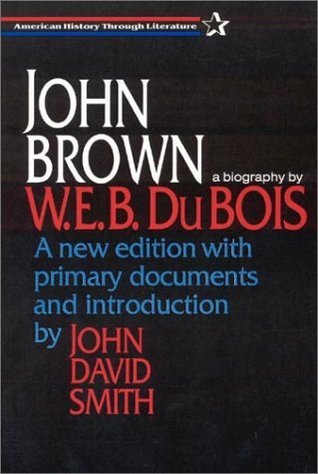
John Brown
Book Description
A man’s fight for justice ignites a revolution. John Brown stands as a fierce abolitionist, his heart consumed by the horrors of slavery and a burning desire for freedom. Tension mounts as he strategizes to dismantle an oppressive system, sparkling hope in the eyes of those who regard him as a hero and a madman alike. Friendships are tested, and betrayals lurk in the shadows, all while the nation teeters on the brink of war. As lines blur between right and wrong, what price is one willing to pay for their beliefs? Will his quest alter the course of history forever?
Quick Book Summary
"John Brown" by W.E.B. Du Bois is a compelling biography of the radical abolitionist whose fierce opposition to slavery helped fuel the national debate leading to the American Civil War. Du Bois traces Brown's evolution from an ordinary man to a militant activist whose moral conviction drove him to take extreme actions for the cause of emancipation. The book explores Brown's relationships, ideology, and the planning of his infamous raid on Harper's Ferry, highlighting the complexities of fighting injustice in a divided nation. Through Du Bois’s critical analysis, Brown emerges as both a hero and a controversial figure, challenging readers to confront the costs of pursuing justice and the blurred lines separating moral righteousness from fanaticism.
Summary of Key Ideas
Table of Contents
Moral Conviction and the Roots of Abolitionism
Du Bois begins by examining the deep moral convictions that shaped John Brown's character. Raised in a fiercely religious and abolitionist family, Brown developed a sense of justice that transcended the conventional methods of protest in his era. His personal experiences, witnessing the cruelty of slavery firsthand, galvanized his lifelong commitment to racial equality. Du Bois illustrates how these early influences not only propelled Brown into the abolitionist movement but also set him apart from more moderate reformers still hesitant to fully dismantle the institution of slavery.
Radical Action and Violent Resistance Against Injustice
As the fight against slavery intensified, Du Bois describes Brown’s increasing willingness to embrace violent means to achieve emancipation. The narrative traces his involvement in the "Bleeding Kansas" conflicts, where Brown led groups of anti-slavery fighters. These episodes revealed his tactical mind and uncompromising stance, and they fueled his reputation as both a liberator and a fanatic. Du Bois does not shy away from the moral complexities, acknowledging that Brown's choices often straddled the boundary between righteous resistance and lawless extremism.
The Impact of John Brown’s Raid on American Society
Brown's 1859 raid on the federal arsenal at Harper’s Ferry is treated as a defining moment in American history. Du Bois delves into the meticulous planning, the challenges Brown and his followers faced, and the swift, violent denouement of the raid. While the immediate result was Brown’s capture and execution, Du Bois underscores how the raid electrified national debate, deepening sectional divisions and accelerating the country’s march toward civil war. Brown’s dramatic sacrifice transformed him from a controversial agitator into a martyr for the cause of justice.
Race, Legacy, and Historical Memory
Du Bois explores the intersection of race, legacy, and historical memory as he situates Brown’s actions within the broader context of American society. Brown’s advocacy for Black liberation, rare among white Americans of his time, earned him lasting admiration from the Black community. Yet public opinion remained fiercely divided, with some viewing him as a heroic freedom fighter and others as a deranged criminal. Du Bois’s account insists on the centrality of Brown’s interracial alliances and their influence on subsequent generations fighting for equality.
Ethics, Fanaticism, and the Price of Justice
Ultimately, Du Bois uses John Brown’s life to probe challenging philosophical questions about the boundaries of justice, morality, and activism. The narrative invites readers to grapple with whether ends justify means in the fight against entrenched evil. Brown’s legacy, as Du Bois frames it, is not merely about the abolition of slavery, but about the universal struggle against oppression. In dissecting Brown’s life, Du Bois asks what society is willing to sacrifice in pursuit of moral truth and justice, leaving an enduring legacy for those who continue to resist injustice in all its forms.
Download This Summary
Get a free PDF of this summary instantly — no email required.





